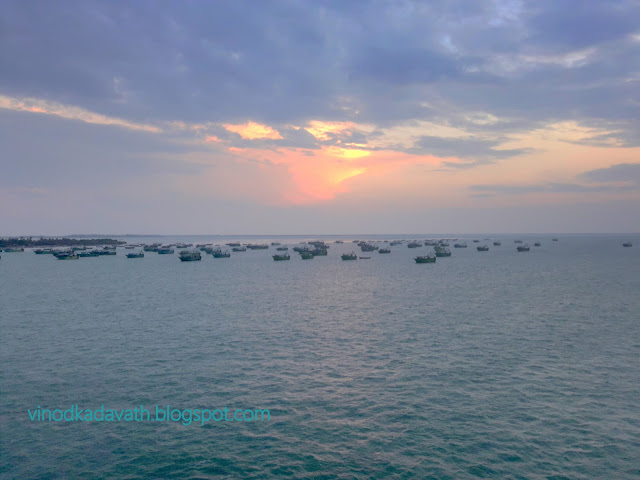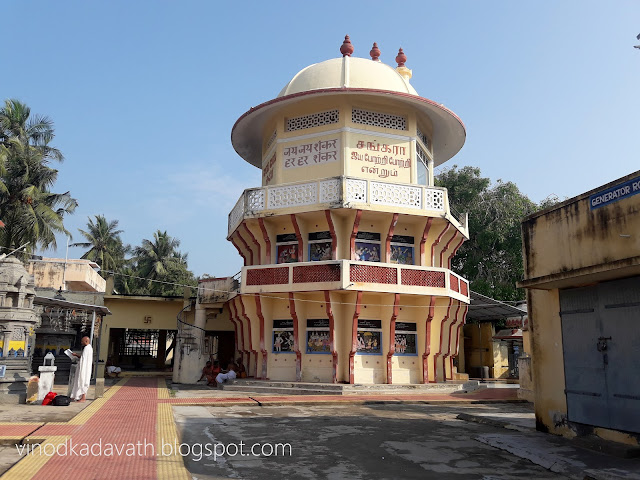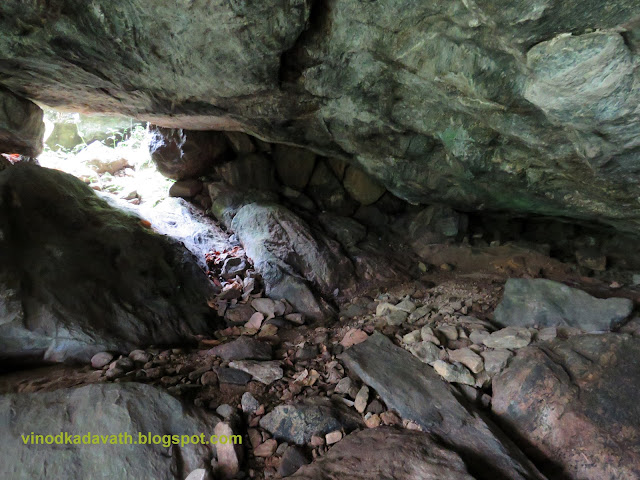I drove heading to Aspinwall house, to visit the fourth edition of Kochi - Muziris Biennale. Since 2012, the first Kochi - Muziris Biennale conducted in various parts of Kochi, streets of Kochi got an artistic make over especially in and around Aspinwall house, which is the main location for Kochi Biennale. The streets were filled with domestic and foreign tourists. Somehow I managed to park my car near to the Cabral Yard. This part of the town has some creative street art to boost off. It was good to see cheerful artwork on the walls initiated by Zanele Muholi .
I started from Aspinwall house and then visited Pepper House and Cabral Yard exhibits. After taking entry ticket from the counter near to the entrance of the Aspinwall house, I enquired about the day's program from the Information Centre. And I walked towards Song Dong's installation 'Water Temple'. Anybody can come and draw with water on the walls.
After visiting few installations, I had lunch from the food joint inside the compound. After a quick visit to Pepper House, I visited Cabral Yard. I was excited to see the Pavilion - a temporary structure at Cabral Yard. Before leaving Cabral Yard, I had tea from a food joint run by Kudumbasree Mission.
Here is a selection of 8 installations from the fourth edition of Kochi - Muziris Biennale to keep an eye on.
Arunkumar's installation Con-struction 1 and Con-struction II, stress on the prefix "con" to point to the deception in the development model. By recycling, reclaiming and reworking industrial waste, especially packaging wood from scrap yards, he not only comments on environmental issues, but indicates a rebirth of this material.
 |
| An installation from Arunkumar |
'From the Oysters Shell it fell with a neck of dangling bells a flirtatious alligator who put upon us a bodily spell ' suggest the underlying repression in the form of a carnivorous plant. The work is also a dismissal of appearances as reductive, inadequate frameorks for representation, reflecting the essentialiation that women, and other minority groups undergo.
 |
| An installation from Rina Banerjee. |
Lubna Chowdhury began Metropolis in 1991 and didn’t complete the installation of 1000 ceramic sculptures until 2017, when she first exhibited the work in its entirety at the Victoria and Albert Museum in London. Metropolis’s abstracted towers, monuments and other less definable forms — some look like handheld electronics, others like toys — aesthetically subverts the preciousness of the medium in the history of art.
 |
| An installation from Lubna Chowdhury |
Shilpa Gupta's installation, 'For, In Your Tongue, I Can Not Fit — 100 Jailed Poets' expands on the artist’s investigations of political borderlines, and how they exist beyond maps to the invisible mechanisms of control and surveillance. The work is an installation of one-hundred speaking microphones that sit above corresponding stakes that each pierce a page of poetry. Recitals of a different poet’s work emanate from each microphone in a synchronized chorus. All of the writers who are represented, some living decades or centuries ago, were imprisoned for their poetry or politics, and the installation gives voice to their forced silence. Incarceration instigates a physical boundary between prisoners and the free world. However 'For, In Your Tongue, I Can Not Fit — 100 Jailed Poets' points to how orchestrated oppression is harder to detect as it renders those imprisoned voiceless and invisible.
 |
| An installation from Shilpa Gupta |
Kausik Mukhopadhyay utilizes, as he puts it,“discarded household gadgets,” or recognizably outdated pieces of technology — dial phones, incandescent light-bulbs, and bulky television sets. The artist re-animates these into kinetic installations where they become players in a cacophonous performance. By highlighting relics from the futuristic visions of the past, Mukhopadhyay’s work therefore raises the question of what the world will look like when these dematerialized technologies become increasingly prevalent and, perhaps one day, obsolete.
 |
| An installation from Kausik Mukhopadhyay |
Sue Williamson's Messages from the Atlantic Passage at Aspinwall South African artist Sue Williamson discusses her work ‘Message from the Atlantic Passages’ which recasts bureaucratic records of the Atlantic slave trade.
 |
| An installation from Sue Williamson |
William Kentridge’s work features a cast of silhouetted figures stepping and dancing in line to the sounds of a brass band. The figures carry objects made from cutouts of Kentridge’s drawings, including portraits of historically significant figures, cages, plants and an array of human belongings. The load-bearing characters recall recent images of refugees migrating to escape the atrocities of their homelands.
'Smiling Angels from the Sky' is an installation of hanging sculptures, with ten “angels” who don pleasant, enthusiastic faces and resemble toy airplanes. Dono presents the angel as a universal symbol of hope for the future that isn’t tethered to any singular tradition or religion, and can therefore be appreciated by any who comes across their winged forms.
 |
| An installation from Heri Dono |



























































